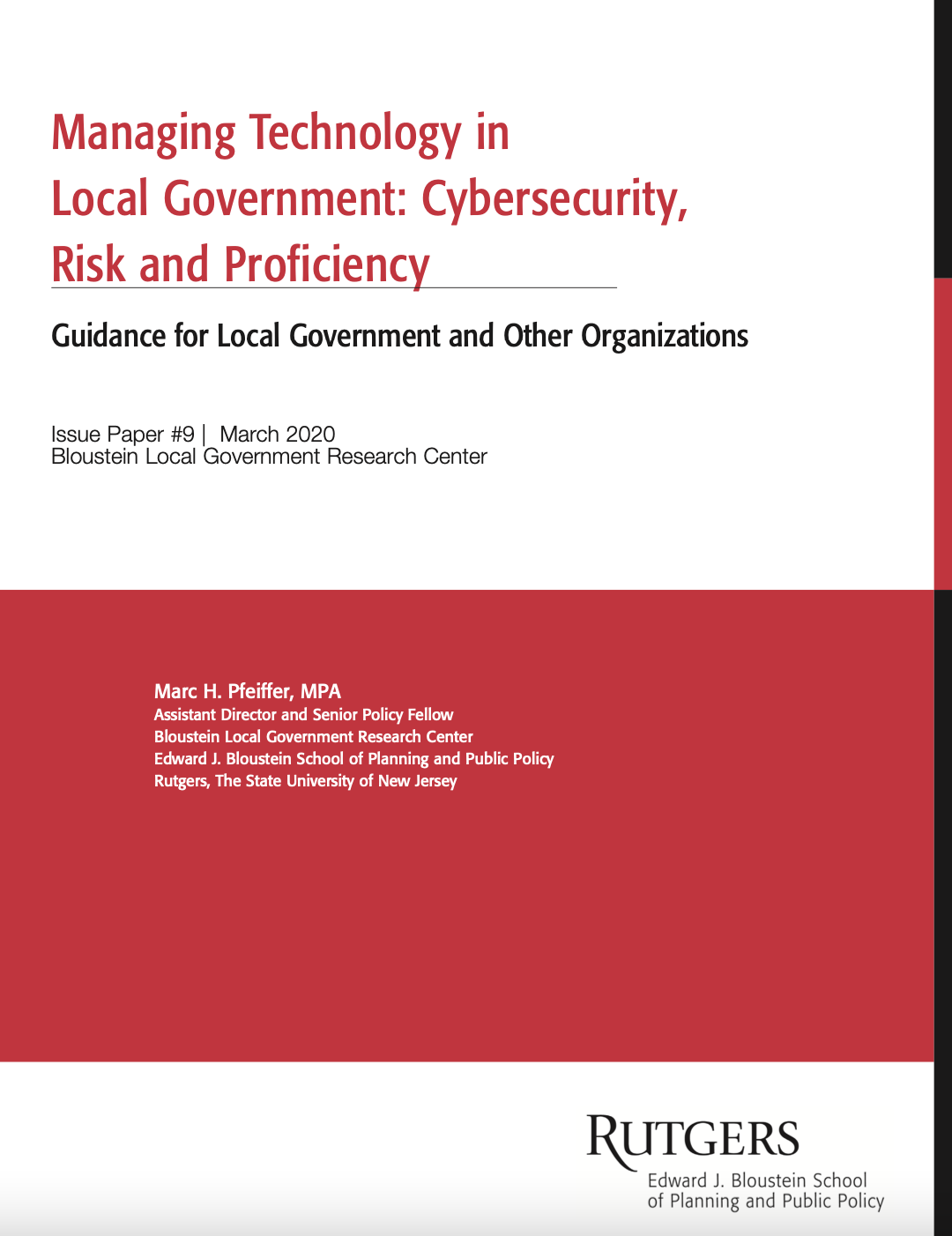Guidance for Local Government and Other Organizations
In the last five years, Bloustein Local Government Research Center has undertaken several local government technology initiatives; this report is based on those findings and recommendations. While focused on and applicable to small- and medium-sized New Jersey local government agencies, the principles and policies put forward may be applicable to all small and medium sized local governments, as well as similarly sized businesses and not-for-profit organizations.
Technology is complicated, as is managing it. And like any other activity, technology requires management time, attention, and financial resources. This report focuses not on technology itself, but
on the challenges presented to senior managers and elected officials who have the decision-making responsibility for their organizations.
After setting the stage with an overview in section 1, guidance is provided from three perspectives:
- Section 2 draws attention to the range of risks organizations face when they adopt today’s
digital technologies. While cybersecurity is by far the most significant, there are five other
risks that require management’s attention. - Section 3 provides technology management guidance to agency governing boards and their
senior managers. This covers the elements of technological leadership, planning, decisionmaking, and budgeting; ensuring technical competence when it comes to maintaining the
agency’s technology; and cyber hygiene, making sure agency employees understand their
role in ensuring cyber safety. - Part 2 (sections 4-6 and the Appendices) promotes a set of minimum technology standards
that when applied, provides a floor level of technological proficiency within the organization.
Taken together, the full report comprises a set of minimum standards and management practices that will provide a reasonable level of proficiency, protection, and sustainability for small and medium-sized government organizations. While the specifics can be debated or modified, they set a practical and achievable starting point upon which organizations can then improve.
The author hopes readers will find this report helpful and supportive as technology becomes even more deeply ingrained in everyday activities. This has particular application for those places looking to embrace the concepts of smart cities, which place great reliance on technology to meet public needs.
